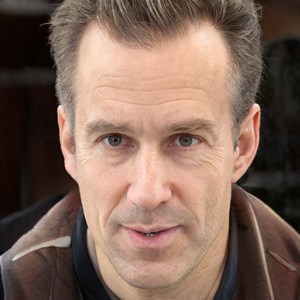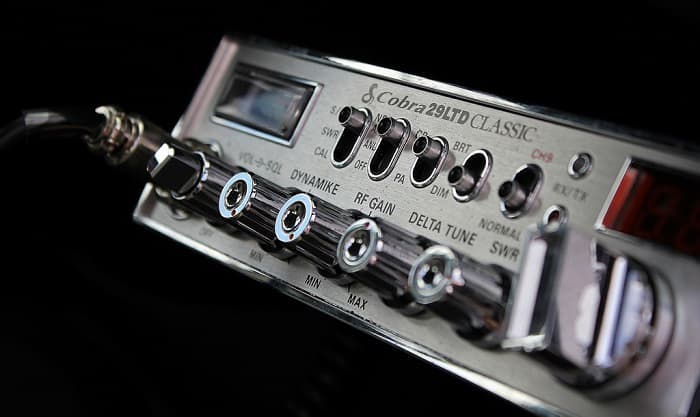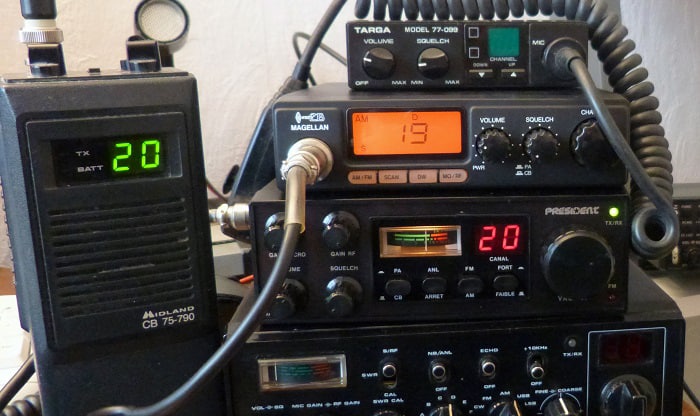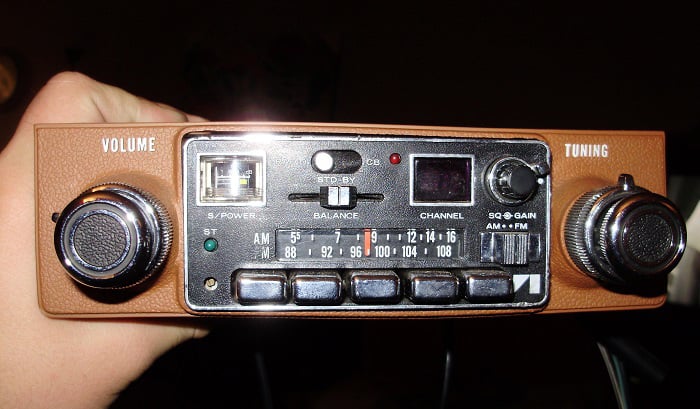RF (Radio Frequency) refers to the wireless communication of signals between two devices. And since this is wireless transmission, it is susceptible to interference from various external factors such as the environment, weather conditions, or multiple channels overlap. That’s where RF gain is used to reduce and counteract background noise.
In the following article, we will provide the answer to “What is RF gain on a CB radio?” and the problems related to using this function to receive a good quality signal and a more transparent sound.
Table of Contents
RF Gain on a CB Radio: What’s It?
The RF gain definition in CB radio is the same thing as “radio.” The term RF describes wireless communication using a signal, similar to RF gain ham radio. The RF gain acts as a signal filter to counteract interference from ambient noise, weather conditions, or overlapping adjacent channels. It will help reduce the noise in the receiver but still can guarantee the receiving power.
What does S/RF CB radio mean?
S/RF is the signal length, and it indicates the strength of the outgoing signal. “S” is the received signal strength in units of S. “RF” means the radio signal power, usually in Watts. Legitimate CB radios are limited to 5 Watts. It means that radios will typically output about 3.5 Watts of AM signal power.
What is RF power on a CB radio?
Not to be confused with “RF Power” and “RF Gain.” Power (P) is the product of current (I) and voltage (V), which is used to quantify the rate of energy transfer. Both current and voltage change for low-frequency signals, resulting in a change in the energy transfer rate.
RF power is the output power level of the signal generator. In practice, people use the output power of signal generators to test the receiver sensitivity and use peak power to test the amplifier of RF power.
What Does RF Gain Do on a CB Radio?
By using CB radio RF gain, you’ve got a method of filtering out the noise without using CB radio squelch. Usually, when you try to pick up a signal on a receiver, you’ll only hear the signals closest to you since they’re the strongest. Therefore, less noise will be received because the furthest signals will disappear.
Therefore, if you want to capture signals from longer distances, always keep the gain wide open (i.e., rotate the RF gain of the CB radio counterclockwise until a signal is received). Conversely, if you want to focus on near transmissions, rotate the RF gain clockwise.
Usually, truck drivers have a habit of turning off the noise on the CB radio completely, then increasing the RF gain, then back to the RF gain control until all the noise completely disappears. While this eliminates the noise caused by signal interference, it also means that drivers will receive other remote signals.
For example, if you are having a conversation on CB radio, the closer the vehicles move, the stronger the signal. Therefore, to maintain dialogue, you can decrease the volume and increase the gain to ensure a strong signal, louder, and more precise sound.
How to Use Your RF Gain and Squelch Together?
Understanding the difference between Squelch vs RF gain will help you tune in and get a better signal from your CB radio.
If in CB radio, the RF gain controls the signal sensitivity and sets the range you want to receive transmissions, then Squelch is the tool that adjusts the transmissions according to their signal strength. Combining these two tools can optimize audio clarity (noise signal) and signal reception range.
About RF Gain
Not all CB radios are capable of RF gain control. However, as mentioned above, there is a way to control the RF gain to enhance the experience on CB radios that is to change the RF with a dedicated knob to eliminate the noise caused by signal interference.
About Squelch
As for Squelch, it can adjust the noise. Without Squelch, all you will hear is static noise. Squelch adjusts the transmissions based on their signal strength by filtering out the transmissions. Many people will misunderstand the function of Squelch to seem similar to RF.
However, these two are entirely different. If RF helps filter signals from thick transmission lines coming from all directions, Squelch can help filter transmitters tens of miles away or other power-generating devices.
How to use RF gain and Squelch together
After understanding the concept and how each function works individually, the next step is to look at how to use these two functions together. First, when you turn on the CB, increase the RF gain for maximum signal reception. Then reduce the squelch all the way (until the static disappears). It is the best method at the moment.
When you drive on the road, the surrounding weather, terrain, distance will change. If you are constantly traveling through different radio zones, that means you don’t need to tune your Squelch as often. For now, reduce some features if your long distances are hindered. You need to leave the RF gain and increase it to reduce the number of overcrowded channels.
Of course, this can make it difficult for you to communicate over long distances. Reducing RF gain too much will cause connection loss. Keep it down as much as you can, but don’t completely lose the signal of the conversation.
Conclusion
The above is a detailed answer to the question “What is RF gain on a CB radio?” which helps explain some information related to RF gain and helps you better understand why you need these features on your CB radio. Noise often has many different types, and we certainly cannot eliminate those noises. However, by controlling RF gain and Squelch to limit signal interference and receive the best possible sound.

Hi, I am Amaro Frank – the Wind Up Radio’s content editor and writer. Working with Adam is so much fun, as his stories and experiences enrich my knowledge about radio communications and radio accessories. My main tasks in Wind Up Radio are building content and generating great articles on different topics around radio accessories.




